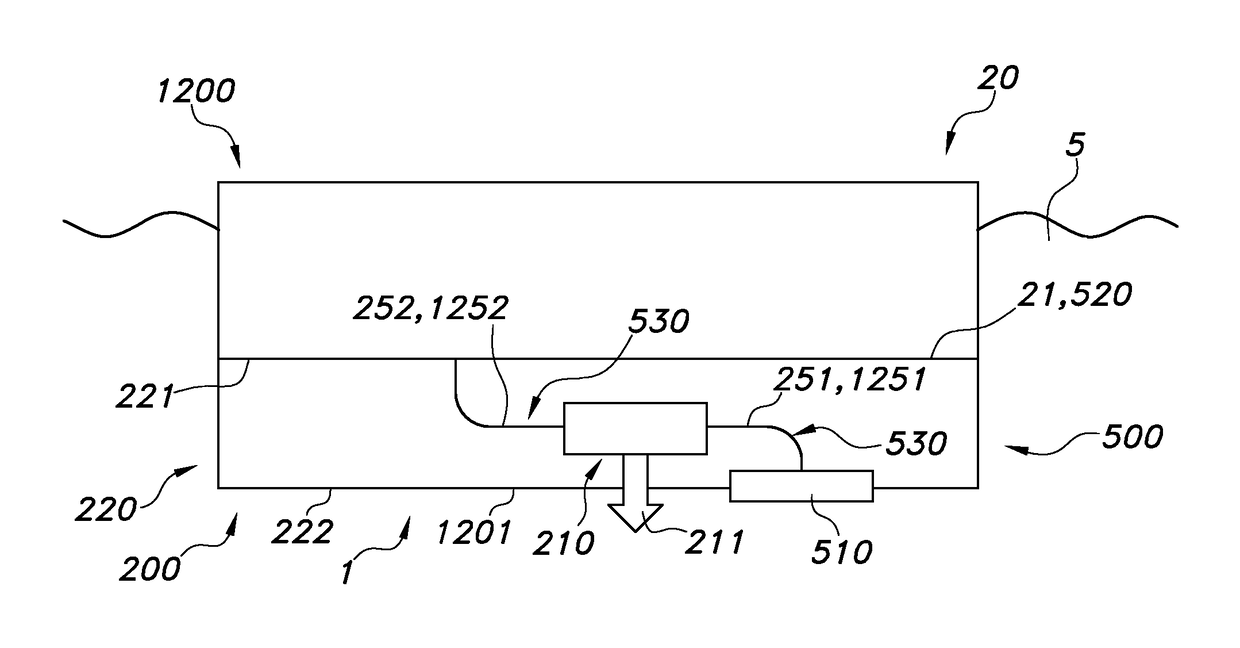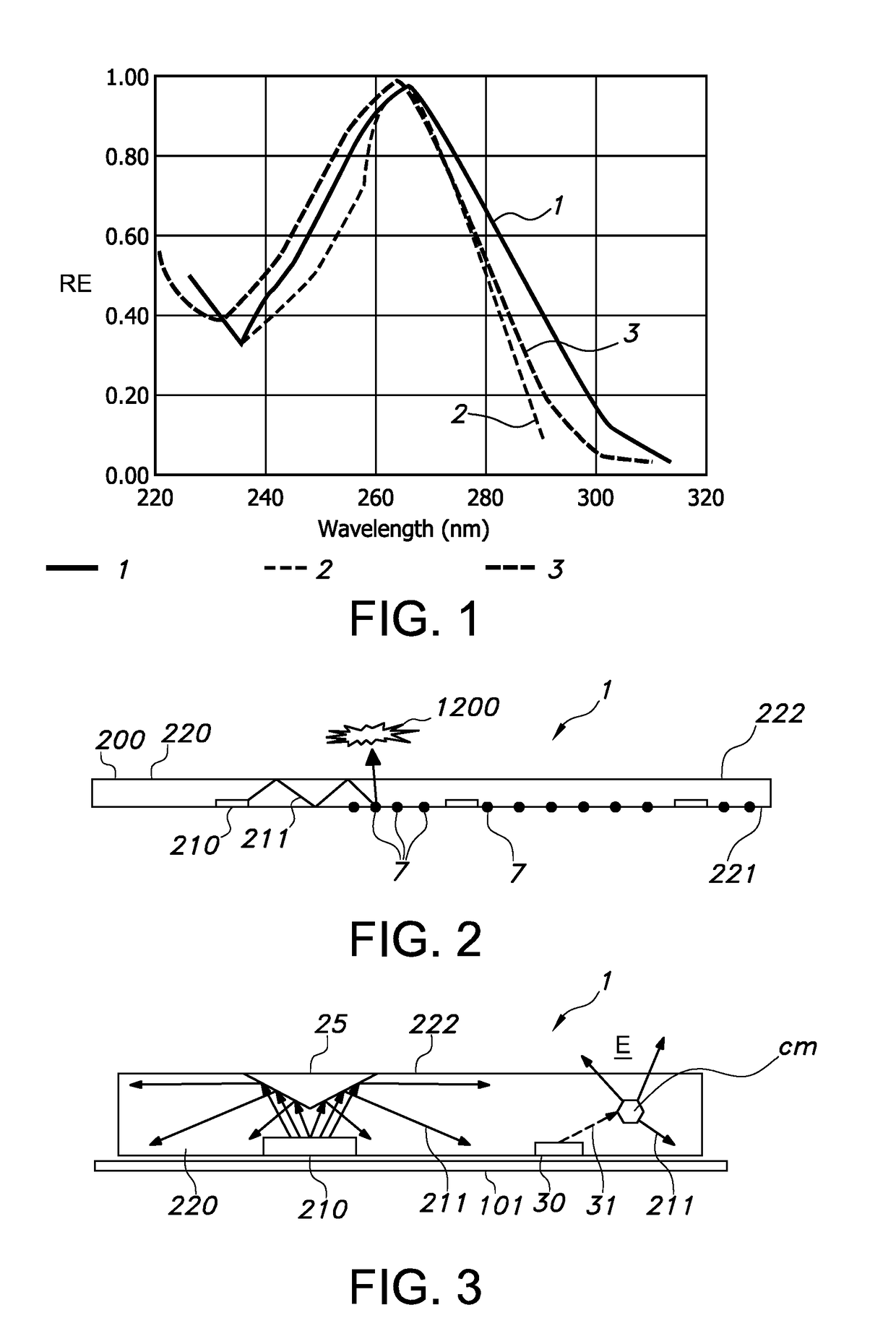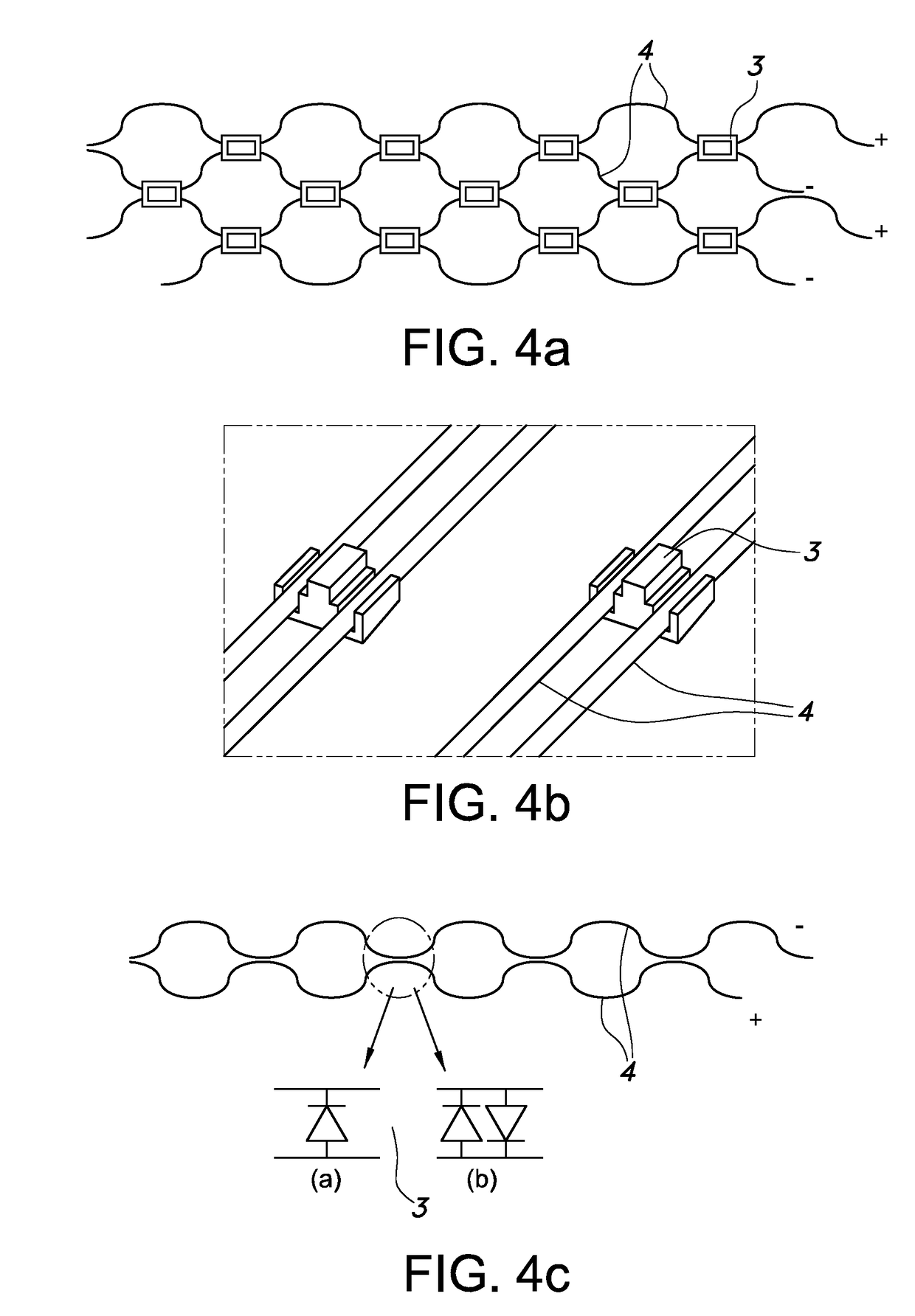Anti-fouling system using energy harvested from salt water
a technology of salt water and anti-fouling, which is applied in the direction of lighting applications, instruments, vessel construction, etc., can solve the problems of biofouling creating substantial problems, clogging of water inlets, and machinery stopping working, so as to enhance (human (and/or animal) safety, the effect of reducing light and energy was
- Summary
- Abstract
- Description
- Claims
- Application Information
AI Technical Summary
Benefits of technology
Problems solved by technology
Method used
Image
Examples
Embodiment Construction
[0101]While the disclosure has been illustrated and described in detail in the drawings and foregoing description, such illustration and description are to be considered illustrative or exemplary and not restrictive; the disclosure is not limited to the disclosed embodiments.
[0102]FIG. 1 is a graph showing a germicidal action spectrum for different biological materials as a function of light wavelength, with RE indicating the relative effectiveness, with curve 1 indicating the germicidal action as derived from the IES Lighting Handbook, Application Volume, 1987, 14-19; curve 2 indicating E. Coli light absorption (as derived from W. Harm, Biological Effects of ultraviolet radiation, Cambridge University Press, 1980), and curve 3 indicating DNA absorption (as also derived from the IES handbook).
[0103]FIG. 2 shows as a basic embodiment a cross section of a lighting module 200 comprising a plurality of light sources 210 (here: side-emitting LEDs, wherein the light is emitted primarily f...
PUM
| Property | Measurement | Unit |
|---|---|---|
| distances | aaaaa | aaaaa |
| wavelength | aaaaa | aaaaa |
| radiation wavelengths | aaaaa | aaaaa |
Abstract
Description
Claims
Application Information
 Login to View More
Login to View More - R&D
- Intellectual Property
- Life Sciences
- Materials
- Tech Scout
- Unparalleled Data Quality
- Higher Quality Content
- 60% Fewer Hallucinations
Browse by: Latest US Patents, China's latest patents, Technical Efficacy Thesaurus, Application Domain, Technology Topic, Popular Technical Reports.
© 2025 PatSnap. All rights reserved.Legal|Privacy policy|Modern Slavery Act Transparency Statement|Sitemap|About US| Contact US: help@patsnap.com



